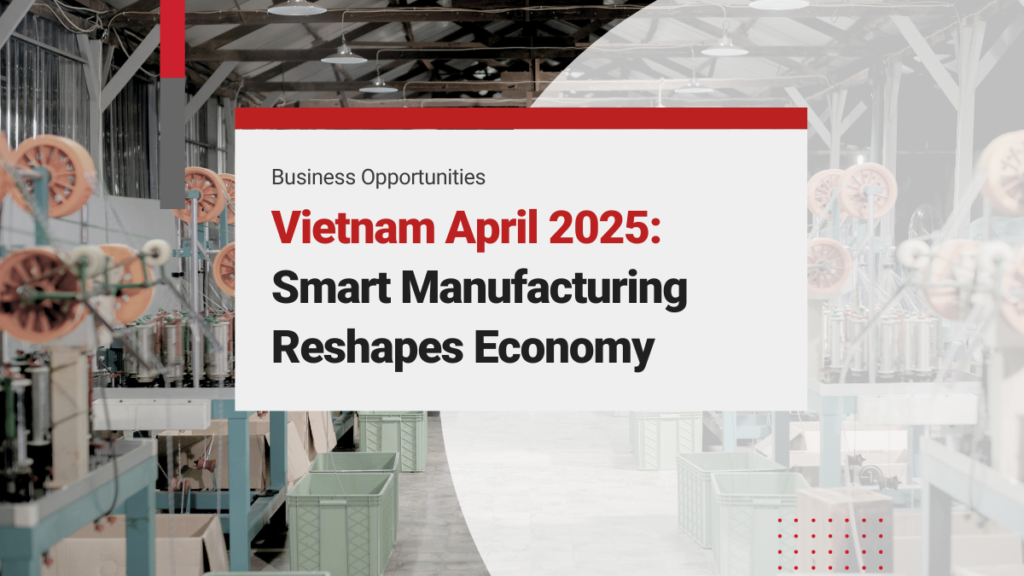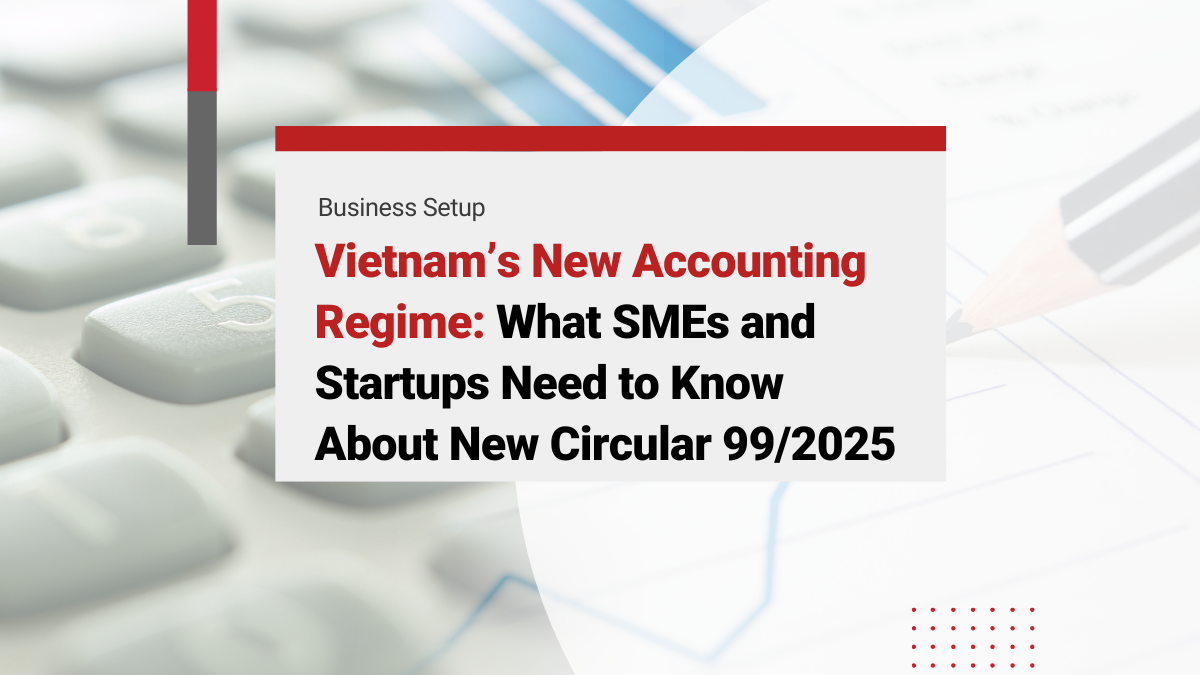April 2025 marks a pivotal point in Vietnam’s economic ascent, with foreign direct investment (FDI) surging across key sectors. In just the first two months, FDI reached US$6.9 billion—up 35.5% year-on-year—cementing Vietnam’s appeal as a top destination for global capital. Leading provinces like Binh Duong, Bac Ninh, and Dong Nai are drawing high-value investments in logistics, semiconductors, and smart manufacturing.
Alongside this financial influx, Vietnam’s industrial and tech landscape is rapidly evolving. From Lego’s eco-friendly factory in Binh Duong to Da Nang City’s US$4 billion Free Trade Zone initiative and Hai Phong’s thriving private sector, the country is emerging as a regional powerhouse for innovation, green energy, and digital growth.
This article highlights key investment updates and business developments shaping Vietnam in April 2025.
Interested in Investing in Vietnam? Check out InCorp Vietnam’s Incorporation Services
Vietnam’s FDI Surges in Early 2025 Momentum
Vietnam’s foreign direct investment (FDI) rose sharply in early 2025, with US$6.9 billion registered in the first two months—a 35.5% year-on-year increase. Binh Duong led with US$630 million, up 326%, while Bac Ninh and Dong Nai followed with US$1.44 billion and US$1.16 billion, respectively.
Projections estimate over US$9 billion in total registered FDI by the end of Q1. Major investors include Mapletree, launching a US$100 million logistics park in Dong Nai. A potential multi-billion-dollar semiconductor plant is also under consideration, reinforcing Vietnam’s role in global supply chains. The government continues reforms to meet investor needs, particularly in infrastructure and energy reliability.
Read More: Vietnam FDI: Analysis of Industries, Source Countries, and Geographical Regions
Vietnam Advances Smart Manufacturing with Global Backing
Vietnam is accelerating its transition to smart manufacturing, with major investments from Chinese firms like Chery and Geely. Chery is investing over US$800 million in a 200,000-unit-per-year factory in Thai Binh, while Geely’s US$168 million plant will produce 75,000 vehicles annually, both set for completion by 2026.
The number of Chinese-listed manufacturers in Vietnam is expected to exceed 350 by end-2025. Despite rising land and labor costs and potential US tariffs, foreign investors see Vietnam as a strategic link in the global supply chain. Experts recommend localizing supply chains and adopting technologies like 5G, AI, and advanced optics to strengthen Vietnam’s industrial base and reduce dependence on imports.
Read Related: Setting Up a Manufacturing Company in Vietnam: Benefits, Industries, Procedure
Envision Energy Plans Wind Projects in Lam Dong
Envision Energy Singapore, part of China’s Envision Energy, plans two wind power plants in Lam Dong’s Duc Trong district. The Ta Nang and Da Quyn projects will each have a 100MW capacity, spanning over 2,200 and 3,800 hectares respectively, with dedicated 220kV transformer stations and transmission lines of up to 30km.
Envision is also preparing to start construction of a US$420 million, 300MW wind plant in Dien Bien by June 2025, featuring 60 turbines and generating 900 million kWh annually. With only one operational wind plant currently in Lam Dong, these projects mark a major step toward realizing the region’s renewable energy potential and strengthening Vietnam’s wind power capacity.
Read More: Vietnam Renewable Energy: Advantages and Growth in the Green Energy Industry
Vietnam Advances High-Tech FDI & Semiconductor Strategy
Vietnam is rapidly expanding its high-tech and semiconductor footprint, with foreign direct investment (FDI) projects totaling over US$510 billion across 42,760 valid ventures—yet only 5% are high-tech. In response, officials at the 2025 Vietnam Connect Forum emphasized shifting from low-cost manufacturing to advanced sectors like AI and semiconductors. Meiko Electronics is investing US$500 million in a PCB facility in Hoa Binh for Apple, while LG Display is adding US$1 billion to its OLED operations in Hai Phong, bringing its Vietnam investment to US$5.65 billion.
By late 2024, Vietnam hosted 174 semiconductor projects with nearly US$11.6 billion in registered capital. Vietnam’s largest city Ho Chi Minh is strengthening ties with the US, Japan, and South Korea to build R&D hubs. Experts call for improved infrastructure, skilled labor development, simplified licensing, and increased R&D investment. These efforts aim to elevate Vietnam from a capital recipient to a regional high-tech innovation leader.
Spain Strengthens Strategic Ties with Vietnam
Spanish Prime Minister Pedro Sánchez’s April 2025 visit to Vietnam marks the first by a Spanish head of government in 19 years, signaling deeper bilateral cooperation. Spain has 97 projects worth US$143.9 million in Vietnam, focused on manufacturing industry and hospitality, while Vietnam has US$64.2 million invested in Spain.
Two-way trade reached a record US$4.72 billion in 2024, growing 20% year-on-year. Spain ranks as Vietnam’s fifth-largest EU trade partner and was among the first to ratify the EVIPA. New agreements will target renewable energy, infrastructure, urban transport, and technology. With over US$1 billion in Spanish ODA pledged to date, the visit underscores Spain’s long-term commitment to Vietnam’s development and economic integration.
Lego Launches Most Sustainable Factory in Vietnam
Lego Group officially opened its US$1.3 billion factory in Binh Duong on April 9—its most environmentally sustainable facility and second in Asia. The plant features 12,400 rooftop solar panels and will operate on 100% renewable energy by early 2026. A new energy center with Vietnam’s first large-scale battery storage solution will support power needs by late 2025.
The site includes LEED Platinum-certified buildings and is the first to produce only paper-based pre-pack bags. It reflects Lego’s Future Factory Workplace model, offering inclusive, green workspaces and community-focused programs. A regional distribution center in Dong Nai is also being launched to improve supply chain agility in Asia.
Read Related: Opportunities and Challenges in the Rooftop Solar Market in Vietnam
Danang Free Trade Zone Spurs Investment Surge
Danang’s pilot Free Trade Zone (FTZ) policy is driving a wave of investment, reactivating and launching large-scale projects worth over US$4 billion. These include the US$460 million Thuan Phuoc Danang New Urban Area and the long-delayed Danang Marina Complex. Other notable investments include Legend City (US$120 million), Lang Van resort (US$1.76 billion), and FPT and Viettel tech projects totaling US$280 million.
The city is evaluating 10 locations for the FTZ, aiming to develop production, logistics, and trade-service zones. Investors will benefit from tax breaks and streamlined procedures for up to 70 years. The initiative has attracted strong interest from sectors like semiconductors, electronics, and life sciences, positioning Danang as a rising tech and investment hub in the Asia-Pacific region.
Private Sector Powers Hai Phong’s Economic Surge
Hai Phong’s private sector is driving strong growth, with nearly 40,000 enterprises contributing 40–48% of the city’s economic output. From 2019–2023, Hai Phong maintained 12.6% annual GDP growth—2.44 times the national average—while per capita GDP rose 11.64% yearly. Projects like VinFast and Nam Dinh Vu Industrial Park underscore the sector’s expanding role.
Hai Phong targets 12.5% GDP growth in 2025, bolstered by improved investment climate, tech upgrades, and institutional reforms. Despite progress, private enterprises—especially SMEs—still face barriers in land access, financing, and procurement. The city launched the Hai Phong Business Association to connect businesses with policymakers and promote global competitiveness, aligning with national goals for a thriving private economy.
Read Related: Trade Logistics in Vietnam: Top Megaports and Their Impact from Saigon to Hai Phong
Conclusion
Vietnam’s economic story in April 2025 is defined by rapid diversification and modernization. A sharp rise in FDI, the expansion of smart and sustainable manufacturing, and deepening global partnerships are propelling the country beyond its assembly-line roots toward a high-tech, green investment future.
Backed by strong private sector momentum and forward-looking government reforms, Vietnam is exceeding global investor expectations. It’s not only attracting capital—it’s setting new standards for regional competitiveness, innovation, and inclusive growth.

clients worldwide

professional staff

incorporated entities in 10 years

compliance transactions yearly






